What Does a Kumquat Taste Like? Tiny Citrus with a Big Surprise!
Kumquats might seem like an unusual citrus fruit that catches your eye in the produce section.
Small yet intriguing, these miniature orange gems pack a surprising flavor profile that challenges typical fruit expectations.
Unlike most fruits you casually pop into your mouth, kumquats offer a unique sensory experience that defies standard taste boundaries.
Their compact size belies a complex taste journey waiting to unfold on your palate.
Culinary enthusiasts and adventurous eaters often find themselves drawn to these petite fruits, wondering about their distinctive flavor characteristics.
The kumquat's reputation for being both sweet and tart creates an enticing mystery that beckons food lovers to investigate further.
Are you ready to unravel the delicious secrets hidden within these tiny, vibrant fruits?
What Is a Kumquat?
Kumquats are tiny fruits sport bright orange skin and have a mix of tart and sweet flavors inside.
People in Southeast Asia love them, and farmers also grow them in warmer parts of the United States. Eating kumquats comes with some nice health perks like extra vitamins and fiber.
Kumquats look like small oranges from Southeast Asia that you can munch on. While they share orange-like colors and shapes, these fruits are super tiny - about the size of an olive.
Round or slightly oblong, kumquats have an interesting name that comes from a Cantonese word meaning golden orange or golden tangerine.
What Does Kumquat Taste Like?
Kumquats offer a mix of sweet and sour flavors.
Their taste brings a citrus-like punch that people enjoy eating raw.
Good kumquats feel heavy and shine with bright orange color.
Kumquat rinds taste sweet and tart, matching orange-like qualities.
Their thick and shiny skin carries a pleasant nutty flavor.
Water helps break down the rind easily.
Inside pulp feels juicy and sour, working well in many dishes.
Seeds inside kumquats taste bitter and people usually spit them out.
Eating whole kumquats or drinking their juice works well.
Seeds might taste bitter but won't hurt you.
Kumquats provide a tasty snack that gives interesting flavor bursts.
Different Types of Kumquat Fruit
Kumquats show up in different looks, but two types stand out most:
Nagami Kumquat
People in United States see this kumquat tree more than others.
Caring for this small, green plant with dark leaves comes easy.
Small white flowers with sweet smells grow alongside fruit.
Taste buds will notice this version tends to have more sharp, tangy notes compared to its cousin.
Meiwa Kumquat
China knows this version well.
Historical records show someone brought this type from Japan to United States back in 1910, though it still hasn't become super popular here.
Round shape marks this kumquat, with flavor leaning more toward sweet sides compared to Nagami.
How to Tell If Kumquat Is Ripe
Look for a kumquat that feels weighty and shows a deep orange color.
Kumquats with low sugar levels taste sour or bitter.
Check ripeness by pressing gently with your thumb.
Proper kumquats feel firm but yield slightly under pressure, without being mushy.
Pluck this small fruit from its branch soon, while it still holds some sweetness.
Best Ways to Use Kumquats in Desserts and Drinks
Kumquats are tiny, tangy fruits with a sweet skin and zesty flavor, making them a fun and bright addition to both desserts and drinks. Their bold taste and pop of color can easily lift any treat or beverage:
Do Kumquats Taste Like Oranges?
Small tree fruits known as kumquats grow in little bunches. Round and compact, they carry a bumpy skin ranging from green to orange-yellow.
People often munch on these fruits directly without much prep work. Slender and lengthy, kumquats contain a liquid center with sweet notes.
Citrus members of the fruit world, kumquats balance sweet and sour tastes that dance on your tongue after each bite. These zesty little fruits leave a memorable flavor experience that lingers pleasantly.
Checking ripeness happens through gentle touch - when their bumpy surface feels soft and peels away smoothly, they are ready to enjoy.
How Fast Do Kumquat Trees Grow?
Kumquat trees work wonderfully for people starting container gardening since they grow simply and need minimal care.
Gardeners want special soil made for citrus or succulents when planting these trees in pots.
Regular pruning helps keep trees compact and attractive for indoor spaces.
Gardeners should pinch back new growth and branch tips to create a fuller shape with strong branches.
Smart pruning encourages better fruit production in future seasons.
Careful trimming matters most when removing top branches while protecting inner and side growth.
People can keep their small tree healthy by watching branch development and cutting back extra-long shoots.
Proper pruning ensures trees stay small enough for indoor spaces and continue producing delicious fruit.
Watching tree shape and size helps gardeners maintain a beautiful potted kumquat that thrives in limited spaces.
Learning basic trimming techniques makes growing these small citrus trees simple and rewarding for beginners who want fresh fruit at home.
Can Kumquats Help With Weight Issues?
Kumquats pack special plant chemicals that might help battle weight problems and related health issues like heart troubles and diabetes.
Scientists are checking kumquat skin extract by testing it on mice.
Special compounds called neocriocitin and pondering show up in large amounts in this extract.
Mice eating a high-fat diet saw different weight results in early tests.
Normal-weight mice on a high-fat diet gained more weight compared to mice getting kumquat extract or a low-fat diet.
Each group ate similar calorie amounts.
More research showed kumquat extract could help shrink fat cells.
Earlier work suggested poncirin might play a role in controlling fat cell behavior.
Mice dealing with obesity experienced interesting weight changes during tests.
Those on a high-fat diet gained 12% body weight in two weeks.
Mice receiving kumquat extract with their high-fat diet did not gain weight.
Both groups consumed nearly identical calorie amounts.
Kumquat extract also helped improve several health markers.
Blood sugar levels dropped, and cholesterol numbers shifted.
Bad cholesterol and triglyceride levels became lower in both parts of the research study.
Are Kumquats Like Mandarins?
Kumquats look like tiny oranges but belong to a different category of citrus fruits.
People don't typically call them oranges.
Small kumquats have bumpy outer skin and see-through coloring with a tasty sweet flavor and mild smell.
Countries in Asia like Japan, China, and India grow these special fruits most often.
People might want at least one kumquat when making fruit salad.
Round kumquats have rough skin that appears see-through and shine with a yellowish tone.
Their inside holds sweet flesh that tastes similar to honeydew melon.
These little fruits connect to orange families but stand as their own special type of citrus.
Most kumquat plants grow across different parts of Asia, with Japan and China leading production.
Local farmers in India also grow these small fruits.
Anyone planning a fruit salad would find kumquats helpful for adding unique flavor and interesting texture.
Kumquat vs. Orange Differences
Small round fruits called kumquats come with bumpy outer skin and see-through coloring.
These special citrus treats have a sweet taste and gentle smell.
Kumquats originally grow in parts of Asia.
People might compare them to oranges, but they are not exactly the same.
Their rough surface and pale color make them stand out from other similar fruits.
Yellow insides provide a nice sweet flavor with a soft scent.
Regions like Japan, China, and India are where kumquats most commonly grow.
Cooks sometimes add these small fruits to make delicious fruit salads.
How to Eat a Kumquat
Kumquats have a sweet and sour taste in both their peel and flesh. People can munch on the whole fruit or just eat the inside part.
Make sure to skip the seeds. Small kumquat peels taste the sweetest, while the inside bits are more tangy.
You can clear out seeds by gently nibbling at the fruit's end.
Snacking on kumquats works well in raw form or mixed into different meals.
Seeds won't hurt you, but they taste bitter. Removing them before eating makes things easier.
Otherwise, you might find yourself spitting them out. Watch out - a seed could make things extra sour.
Rubbing the fruit can help you enjoy it without seeds.
Kumquats belong to the citrus family with a sweet flavor.
Seeds aren't dangerous, but they have a bitter taste similar to orange seeds. Picking good kumquats means checking for firm, orange-colored fruit.
Skin quality matters when deciding if the kumquat is ready to eat.

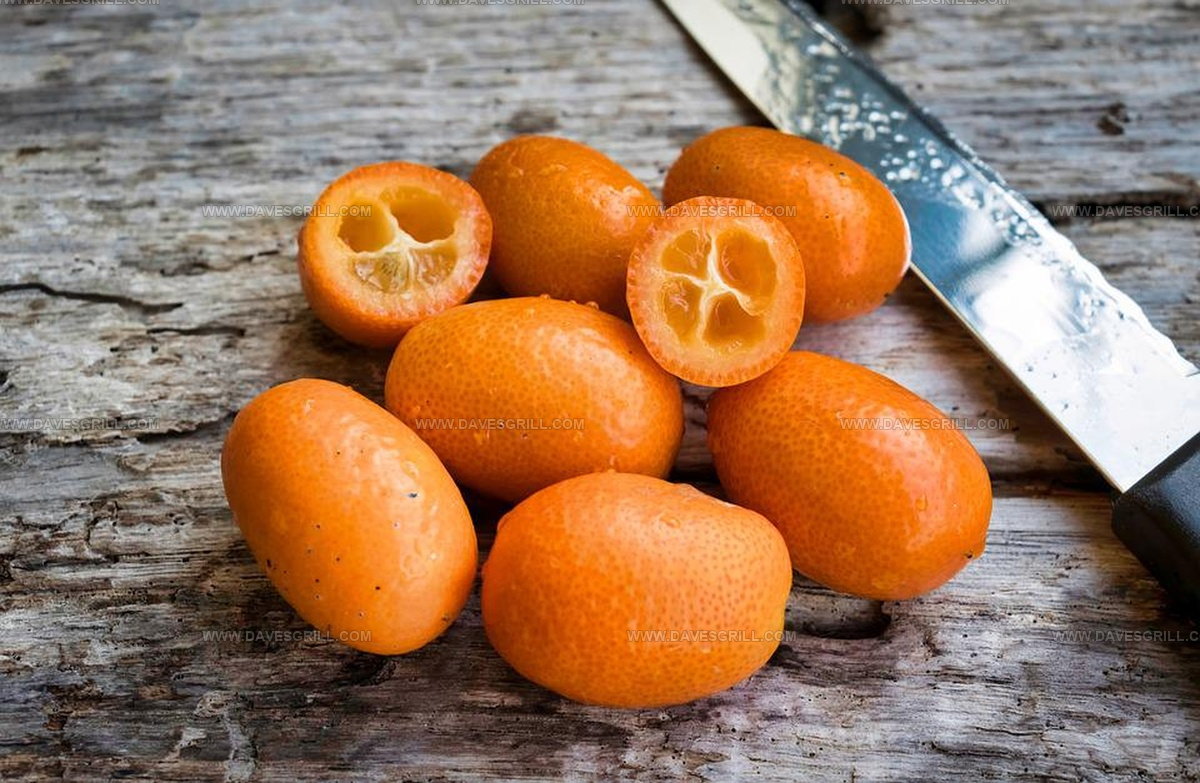
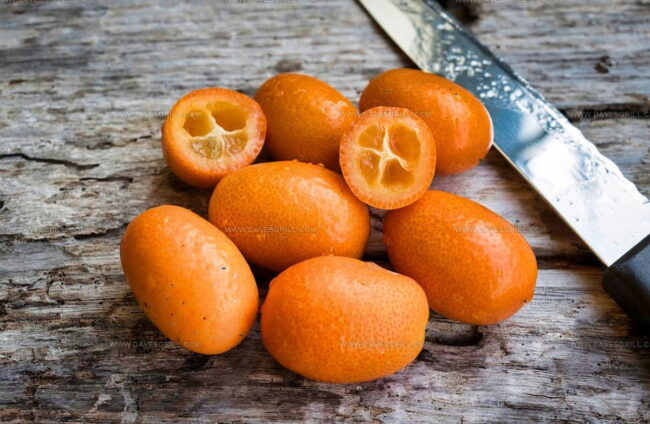
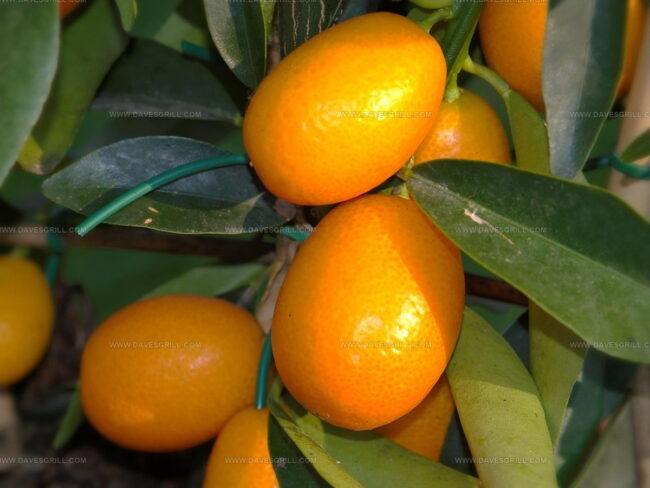
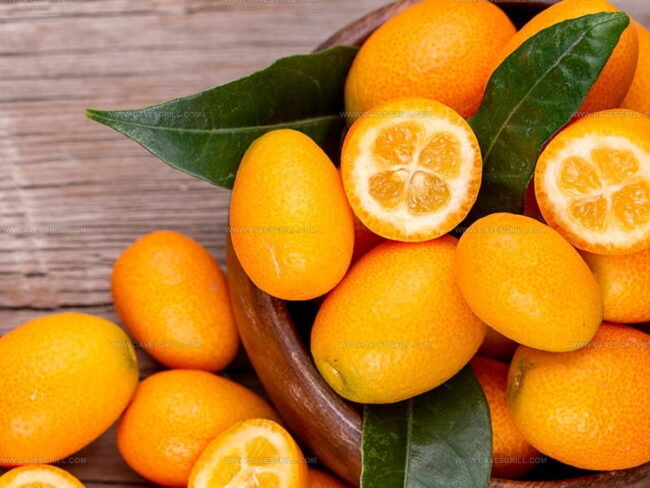
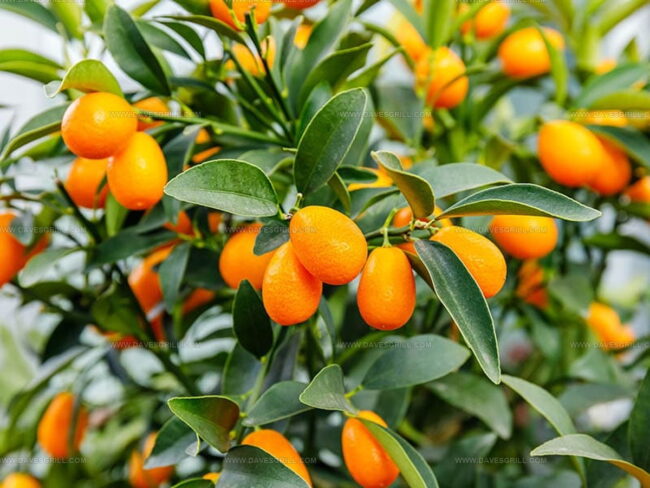

Emily Lawson
Content Creator & Culinary Specialist
Expertise
Education
Oregon Culinary Institute
Diploma in Culinary Arts
Focus: Emphasis on farm-to-table cooking, sustainable practices, and the fusion of global flavors with traditional grilling methods.
Emily Lawson is the content creator at Daves Grill, turning tasty ideas into clear, easy recipes. Based in Portland, she trained at the Oregon Culinary Institute and loves cooking with fresh, seasonal ingredients, especially grilled veggies and global flavors.
Emily mixes food writing with hands-on cooking to bring you recipes that feel fun, not stressful. Her goal is to make every dish simple, flavorful, and worth coming back to. Together, she and Dave serve up real food, one recipe at a time.